Wildlife like the (Marsican) brown bear can return if we give it space and take measures to live alongside it. We support coexistence by facilitating communities in taking prevention measures. Appropriate measures can help mitigate conflict and, in turn, increase tolerance of bears, paving the way for the population to increase in size and range.
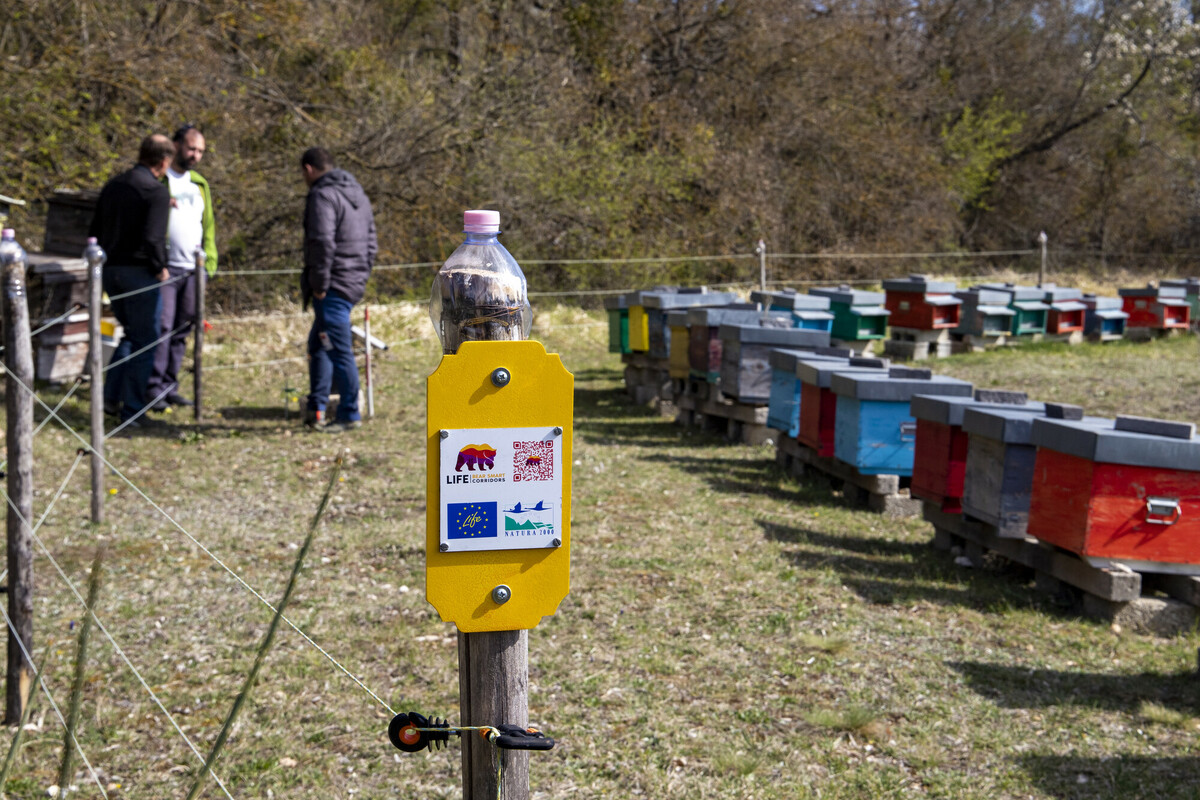
Livestock protection measures
By reducing conflict between wildlife and agricultural activities, people become more accepting of wildlife presence. Livestock protection measures supported through LIFE Bear-Smart Corridors include: electric fences, bear-proof metal doors, bear-resistant chicken houses.
Electric fences are an effective measure to prevent bears from entering an animal enclosure, vegetable garden or accessing beehives. If a bear would try to enter the enclosure, it receives an electric shock, strong enough to scare it away without harming it, which makes the fear of crossing the fence higher than the desire to reach the food inside.
To ensure the uptake of this best practice, farmers benefiting from these measures will be actively involved in the installation and maintenance as part of the capacity enhancement workshops.
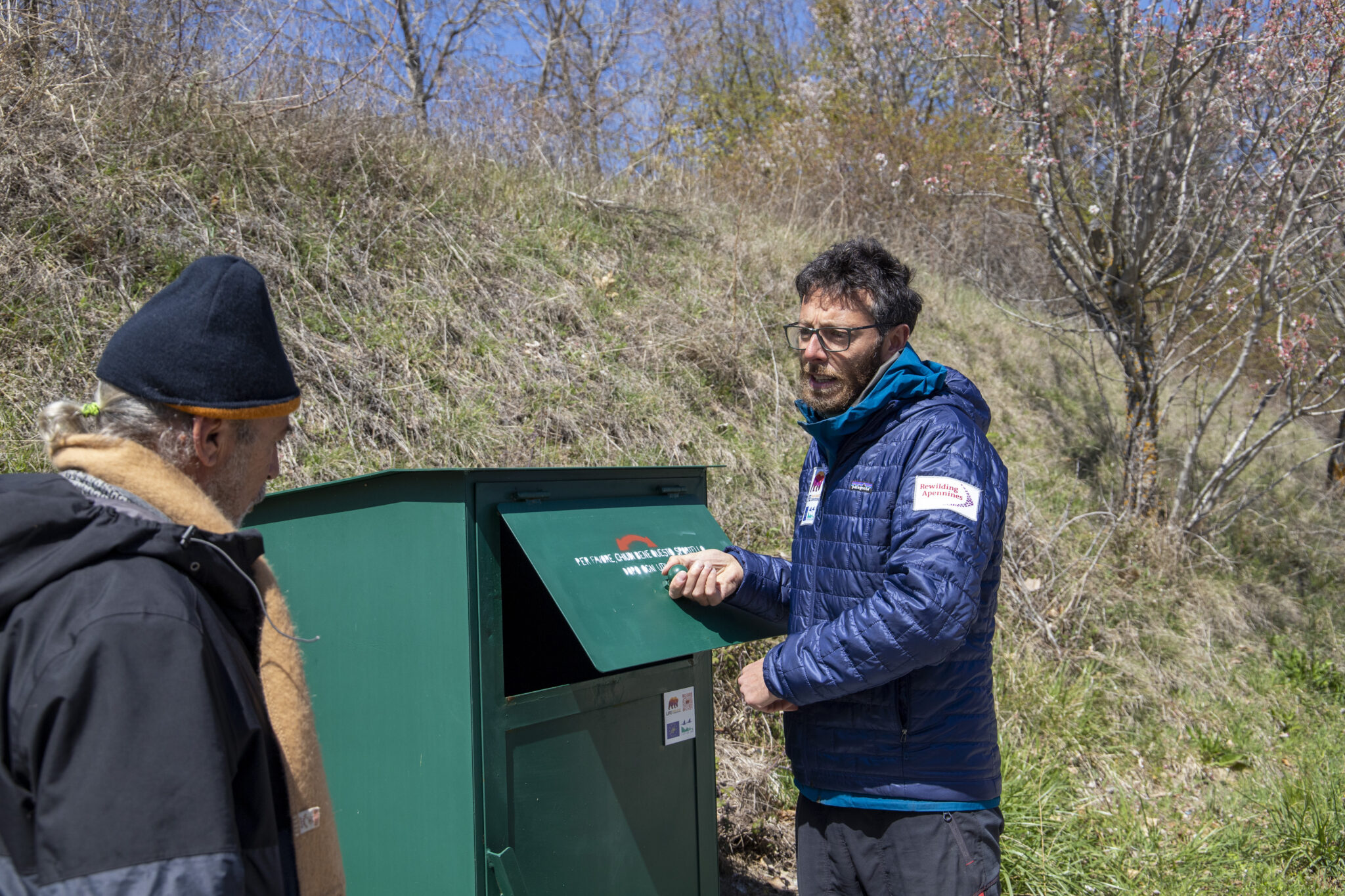
Placing bear-proof waste bins
Bears are opportunist omnivores and can be attracted to rubbish bins and other easily available food sources. This might lead bears into areas of human habitation which can cause conflict. This is a particular issue for settlements on the outskirts of towns and villages that do not have door-to-door waste collection services. A relatively simple, but effective solution is the use of solid, tested bear-proof waste bins that the animals can’t access, which will discourage bears from roaming into these areas and becoming habituated to human presence.
The action is strongly tied to education and awareness programmes to encourage people to be responsible and ensure that food that might be attractive to bears is not left outside and unprotected.
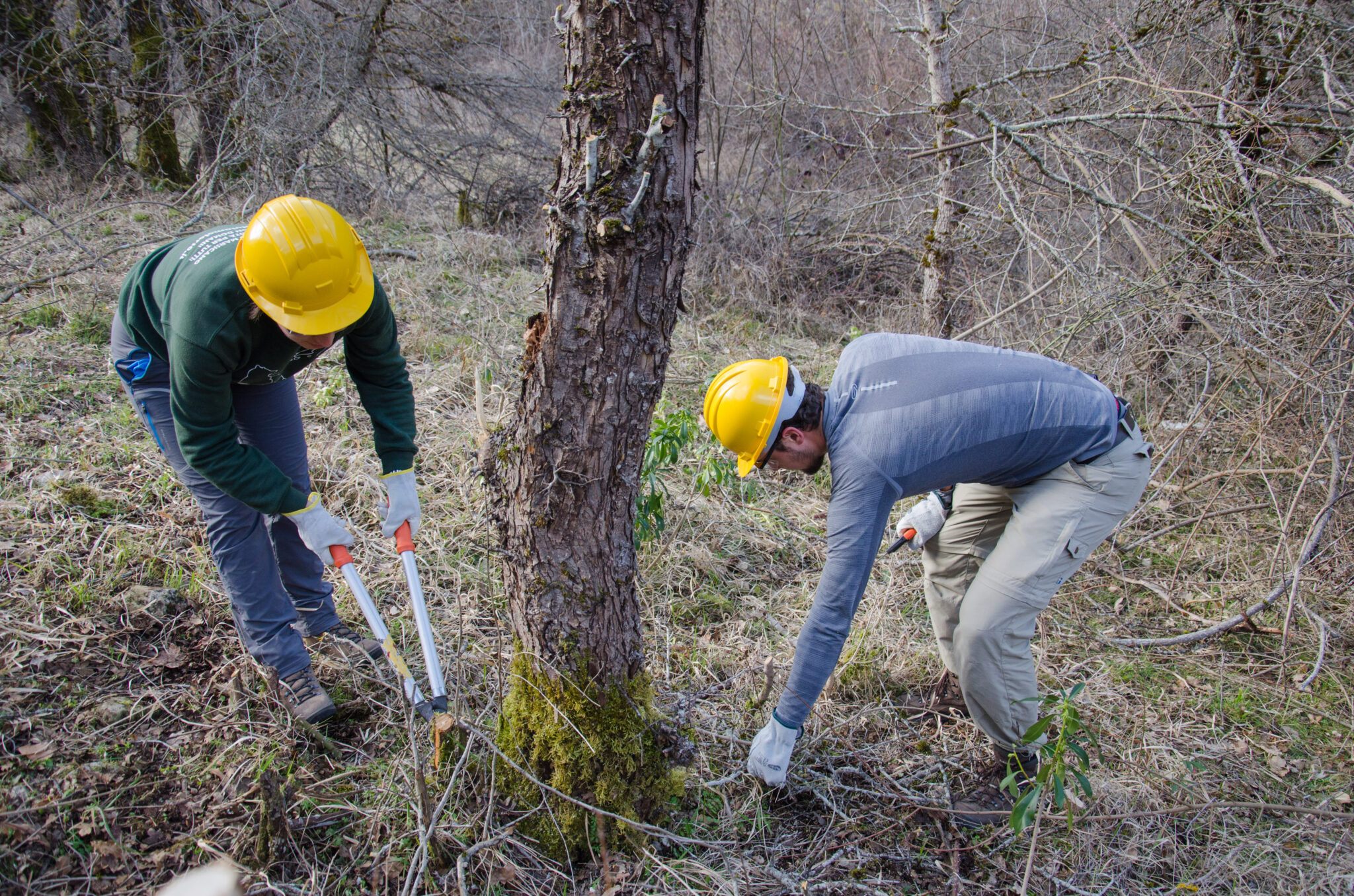
Increasing food availability through tree pruning
In the Apennines, agricultural abandonment has allowed scrub encroachment across a formerly agricultural landscape. In many cases, this has been positive for nature and wildlife. However, abandoned orchards and alpine buckthorn stands are particularly important food sources for bears in the crucial run up to hibernation.
As scrub encroaches orchards and alpine buckthorn areas, the abundance of fruit reduces. Bears might then range into less suitable areas in the search for food, leading to human-bear conflict. Instead, reducing scrub and pruning these abandoned orchards offers bears adequate food away from villages, enhancing human-bear coexistence. Moreover, the recovery of unused orchards rebuilds a traditional cultural part of the central Apennine landscape providing a good mechanism to engage local communities.
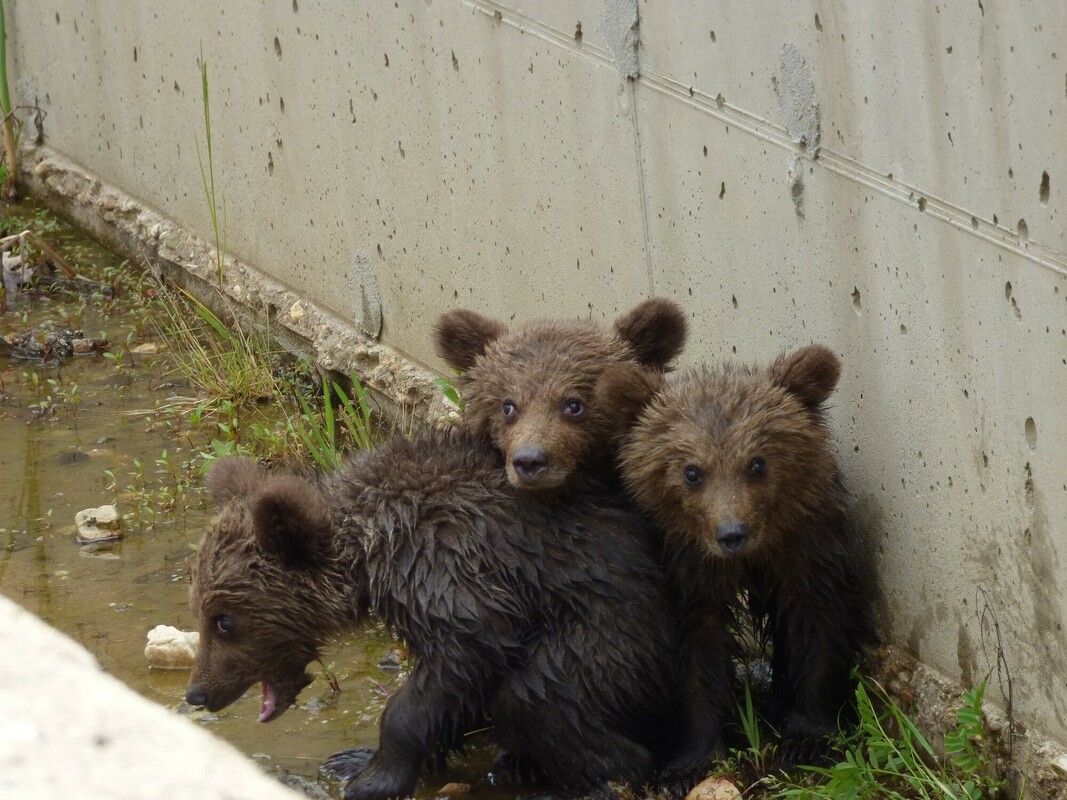
Securing water wells
Unsecured water wells or water tanks (for irrigation or fire extinguish purposes) located in forested areas have been proven to be a worldwide threat for wildlife. In both Italy and Greece, several cases of trapped or drowned bears in wells or water tanks have been reported.
Interventions to make wells and other water collection structures safe include: ramp construction (made of galvanised steel, concrete or stone gabions or through demolishing a well-side wall), metal grids to cover wells and metal fencing around wells, with a preference towards ramp construction to allow safe access to water by large animals such as bears
Geodata dashboard coexistence actions – Italy
Monitoring of the development of Bear-Smart Communities and the effectiveness of coexistence measures is a vital part to support the recovery of the (Marsican) brown bear population in both Italy and Greece. Throughout the landscape, potential and actual threats to bear conservation status and local range expansion are recorded, as well as data on the location and number of coexistence measures implemented.
The below dashboard offers insight into these data and current efforts taking place. It should be noted that while every effort is taken to collect all information needed for effective implementation of coexistence measures, data collection in landscape is biased due to accessibility, resources and/or other external factors. Therefore, no data visible in or outside protected areas or corridors is not necessarily an indication of the lack of food availability, threats, or implemented actions.
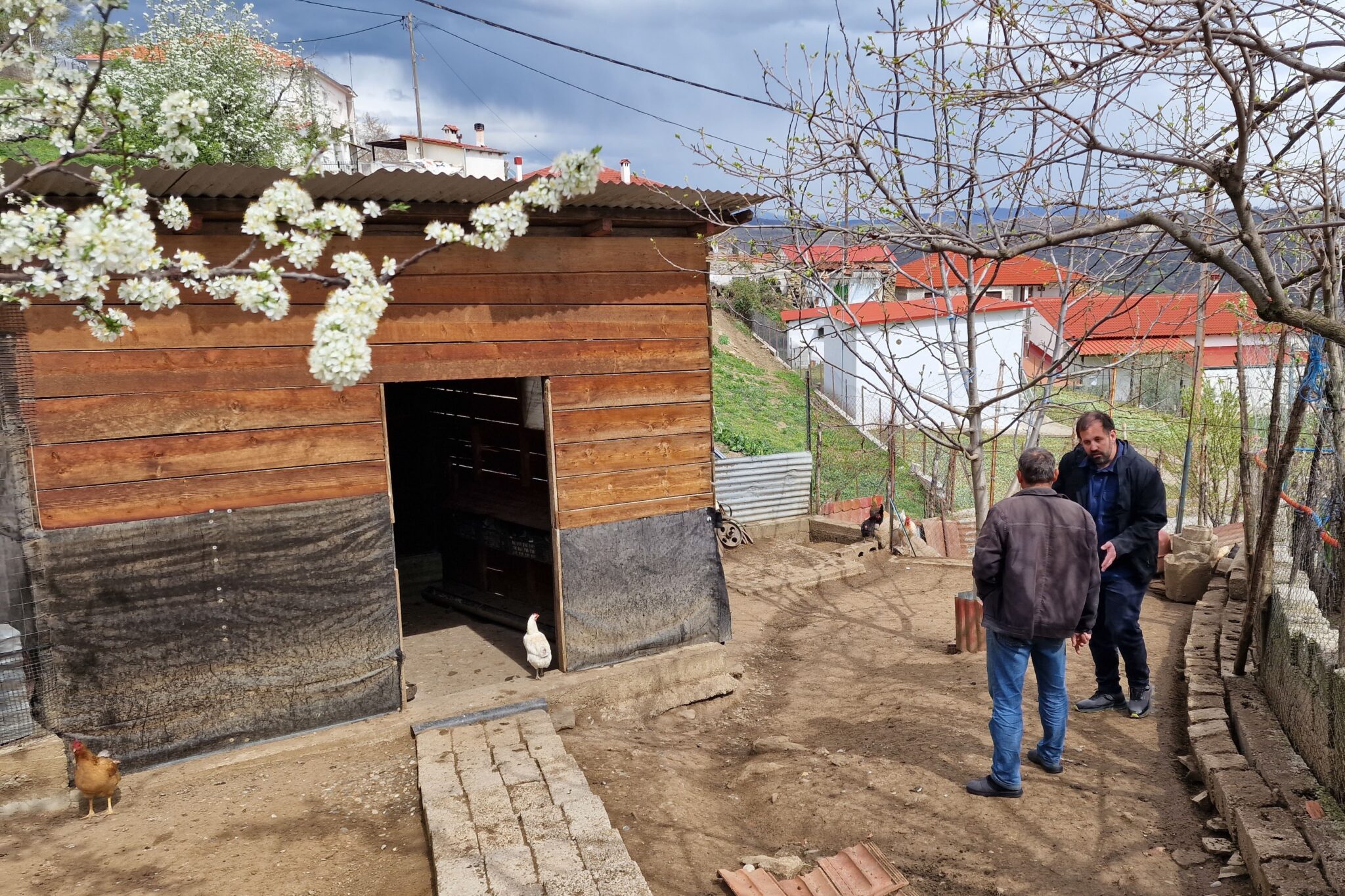
Bear Intervention Units
In both Greece and Italy, local partners aim to establish Bear Intervention Units. These ‘BIUs’ are teams with significant scientific/technical expertise (for example a biologist/veterinarian and/or a field technician) or specifically trained volunteers that can rapidly respond in case of any human-bear conflict situation and offer support to mitigate and resolve such situations.
Given their task of responding to and monitoring conflict situations, the BIUs have an important role in improving bear habitat suitability, increasing social acceptance of the species and help to monitor project progress.
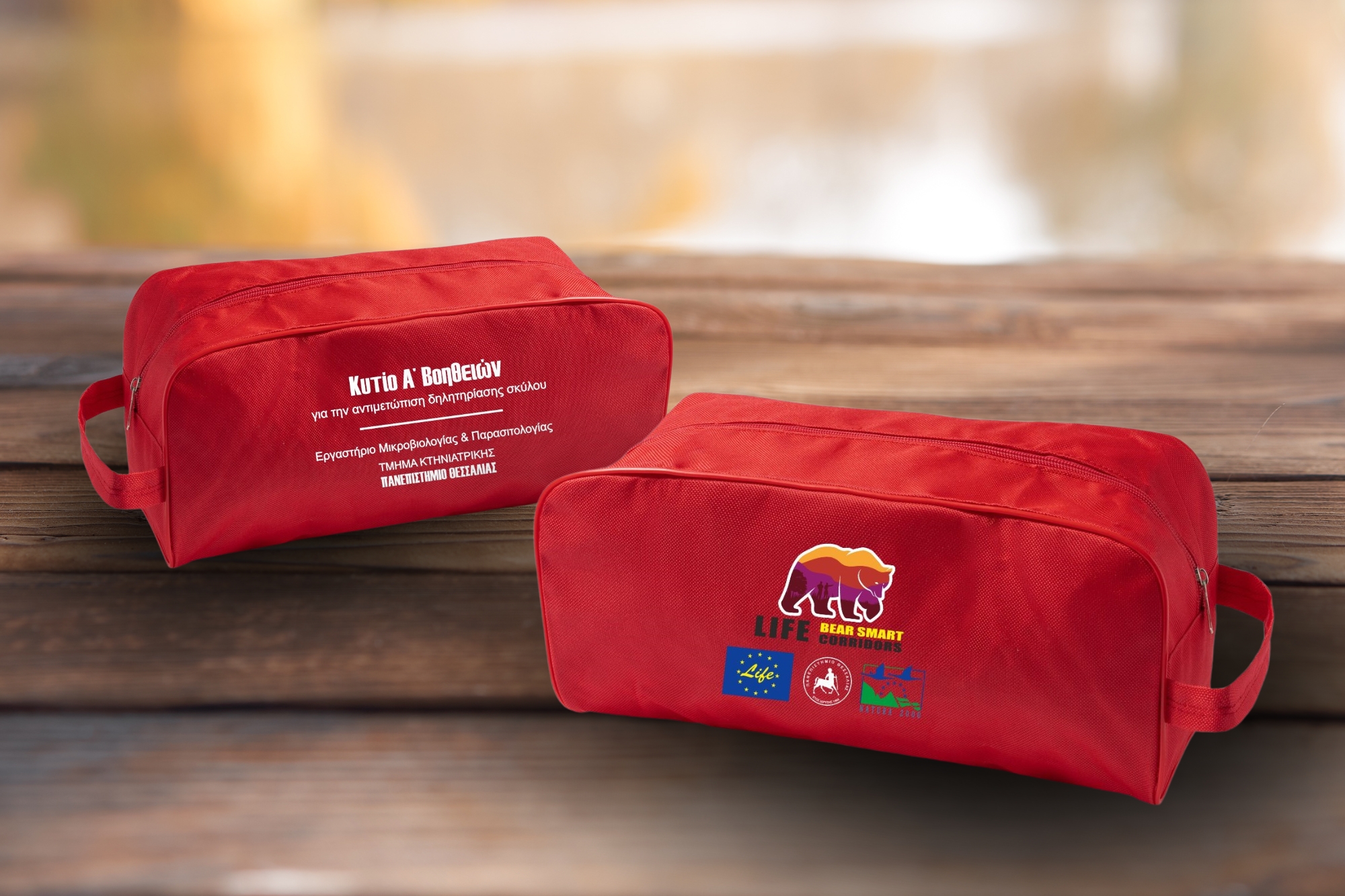
Anti-poisoning first aid kits for public agencies and farmers
The use of Livestock Guarding Dogs is the most popular, non-invasive, and affordable approach to protecting livestock from wildlife attacks. However, in Greece, where poisoned baits are commonly used illegally as a lethal measure against large carnivores poisoning forms a constant and repeatedly recognised threat to Livestock Guarding Dogs.
To address such poisoning incidents, First Aid Anti-Poison Kits will be developed and distributed in Greece. The kit will include the needed veterinary medicines, consumables, and biosafety equipment as well as contact details to facilitate the transfer of dogs to veterinary facilities. Before kit donation, local stakeholders will be committed to attend a short workshop regarding the clinical signs of poisoning in dogs, the mandatory biosafety measures, and the kit’s appropriate use.
Geodata dashboard coexistence actions – Greece
The below dashboard offers insight into monitoring data and coexistence actions taking place in Greece. While partners in both Greece and Italy are joining forces to implement the Bear-Smart Community concept, it should be noted that development of Bear-Smart Communities is context dependent, as are the coexistence measures that are part of it. This means that within the context of the LIFE Bear-Smart Corridors initiative different measures are implemented and different data is collected and shown on the dashboard compared to the Italian landscape. In addition, involved NGOs may work on many other coexistence actions that are not recorded within the scope of the LIFE Bear-Smart Corridors initiative.
As is the case for Italy, data collection in the landscape is biased due to accessibility, resources and/or other external factors. Therefore, no data visible in or outside protected areas or corridors is not necessarily an indication of the lack of threats, or implemented actions.
